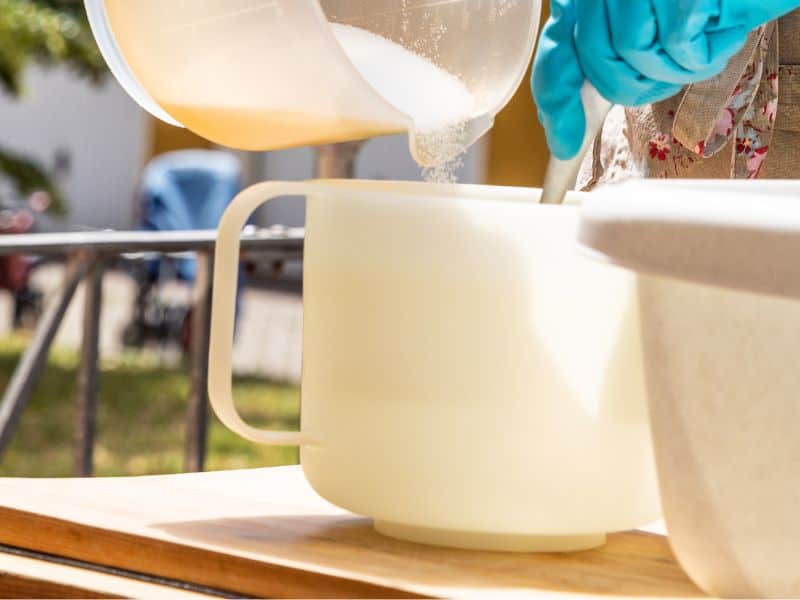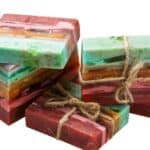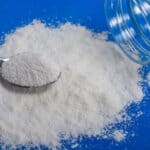Cold process soap making comes with its own set of challenges. One common issue that soap makers face is curdling, which can leave your soap with an undesirable, lumpy texture. In this article, we’ll explore the causes of soap curdling and provide practical solutions.
Cold process soap curdles due to incorrect temperatures, poorly mixed lye solution, incompatible fragrances, or fast-moving recipes. Understanding these causes and following best practices can help prevent curdling and create smooth, high-quality soaps.
When encountering curdled soap, it’s essential to assess the damage and determine the appropriate course of action. Salvaging mildly curdled soap may result in a rustic appearance, while more severe cases may require alternative methods like hot process rescue.
Embrace the learning process, refine your technique, and continually improve your soap making skills to prevent future curdling and achieve beautifully crafted soaps. Let’s take a closer look at this issue and some possible solutions.
Understanding Soap Curdling
Curdling in cold process soap refers to the soap batter developing an uneven, lumpy, or grainy texture, resembling cottage cheese. This issue can negatively affect the soap’s appearance, texture, and overall quality. A variety of factors can contribute to curdling, such as incorrect temperatures, a poorly mixed lye solution, incompatible fragrance or essential oils, and fast-moving soap recipes.
Common Causes of Curdling
Incorrect Temperatures
Maintaining accurate temperatures is crucial in soap making. If your oils or lye solution are too hot or too cold, curdling may occur.
Use a thermometer to monitor the temperature of your oils and lye solution throughout the process.
Aim for a range between 100°F and 120°F for both ingredients. Keep in mind that different recipes might have specific temperature requirements to ensure success.
Poorly Mixed Lye Solution
Lye is essential in soap making, as it reacts with oils to create soap through a process called saponification. A poorly mixed lye solution can lead to curdling. When combining lye with water, always pour lye granules into the water, never the other way around, to avoid a dangerous chemical reaction.
Stir the mixture gently and patiently to ensure complete dissolution. Use distilled water to prevent impurities from interfering with the lye solution and subsequent saponification.
Fragrance and Essential Oils
Certain fragrances or essential oils can negatively affect soap consistency and lead to curdling. To prevent this, thoroughly research scents compatible with cold process soap making. Check reviews and guidelines provided by suppliers to ensure your chosen oils are suitable.
When incorporating fragrances or essential oils into your soap batter, add them at a light trace and blend evenly. Be cautious with the amount used, as excessive oils can cause issues with the soap’s structure and performance.
Fast-Moving Soap Recipes
Some ingredients can impact the speed at which soap reaches trace, causing it to thicken rapidly. Fast-moving recipes may result in curdling if not managed properly.
To identify fast-moving recipes, examine the ingredients list. Ingredients like coconut oil, palm kernel oil, and some animal fats tend to accelerate trace.
To slow down trace, adjust these recipes by using a higher percentage of slow-moving oils, such as olive oil, sunflower oil, or rice bran oil. Increasing the liquid content or decreasing the superfat level may also help achieve a more manageable trace.
Preventing Soap Curdling
Adhering to best practices in soap making is essential to prevent curdling. Begin by researching and preparing for your project.
Understand your ingredients, their properties, and how they interact.
Measure accurately and maintain proper temperatures throughout the process. When mixing, ensure a smooth and even consistency before pouring the batter into the mold.
Here are some tips for avoiding common pitfalls:
- Use a reliable recipe from a trusted source and ensure it’s suitable for your skill level.
- Double-check measurements and temperatures to maintain consistency.
- Gradually incorporate additives, such as fragrances and colorants, to avoid shocking the soap batter.
- Keep detailed notes on each batch, making it easier to troubleshoot issues and refine your technique over time.
Troubleshooting Curdled Soap
If your soap curdles, don’t despair! First, assess the extent of the damage. Some curdling may be purely aesthetic, while more severe cases can impact the soap’s structure and usability.
To salvage curdled soap batches, try these tips:
- If the curdling is mild and the soap is still moldable, continue with the process. The final product may have a rustic appearance but should remain functional.
- If the curdling is more severe and the soap is unmanageable, you can attempt a “hot process” rescue. Heat the soap in a slow cooker or double boiler to encourage further saponification, breaking down lumps and allowing for better blending. Keep an eye on the mixture and stir occasionally. Once the soap reaches a smoother consistency, mold it and let it cool.
- In some cases, the soap may be unsalvageable. Use this as a learning opportunity to improve your technique and avoid repeating the same mistakes.
Remember, soap making is a craft that requires patience and practice. Embrace the learning process and continually refine your skills to produce beautiful, high-quality soap.
Curdling vs Ricing vs Separation
Curdling, ricing, and separation are three common issues that can occur in cold process soap making. While they may have some similarities, they are distinct and have different causes.
Curdling
Curdling is characterized by the soap batter developing a lumpy or grainy texture, similar to cottage cheese.
It occurs when the soap’s ingredients don’t properly emulsify, leading to an uneven consistency.
Curdling can be caused by issues with temperature, poorly mixed lye solution, incompatible fragrances, or fast-moving soap recipes.
Ricing
Ricing occurs when small, rice-like granules form in the soap batter, making it difficult to pour into the mold.
Ricing is caused by an adverse reaction between the fragrance or essential oils and the soap base.
It can occur suddenly, even with a well-mixed batter, and can be difficult to remedy.
Separation
Separation is when the oils and other ingredients in the soap batter don’t combine correctly and start to split apart.
Separation can happen during the soap making process or after the soap has been poured into the mold.
It’s usually caused by incorrect temperatures, insufficient mixing, or issues with additives.
While these issues are different, they can often be avoided by following best practices, such as using accurate measurements, monitoring temperature, properly mixing lye solution, choosing compatible fragrances, and selecting the right ingredients.
Frequently Asked Questions
Lye is essential in soap making, and if not mixed properly, can lead to curdling. Always pour lye granules into water and stir gently and patiently to ensure complete dissolution.
Certain fragrances or essential oils can negatively affect soap consistency, leading to curdling. Research and choose scents compatible with cold process soap making, and add them at a light trace.
Fast-moving recipes can cause curdling if not managed properly. Identify fast-moving recipes by reviewing their ingredients and adjust them by using a higher percentage of slow-moving oils.
Prevent curdling by researching and preparing for your project, measuring accurately, maintaining consistent temperatures, and gradually incorporating additives.
Try salvaging mildly curdled soap or attempt a “hot process” rescue for more severe cases. In some instances, the soap may be unsalvageable, but use the experience as a learning opportunity.
Prevent separation by maintaining consistent temperatures, properly mixing ingredients, and choosing appropriate additives.
Conclusion
In conclusion, understanding the causes of curdling in cold process soap making is crucial to prevent and address this issue.
By maintaining accurate temperatures, properly mixing your lye solution, selecting compatible fragrances, and managing fast-moving recipes, you can ensure smooth, high-quality soaps.
Troubleshooting and salvaging curdled soap batches can turn mistakes into valuable learning experiences, helping you refine your technique and perfect your craft.






